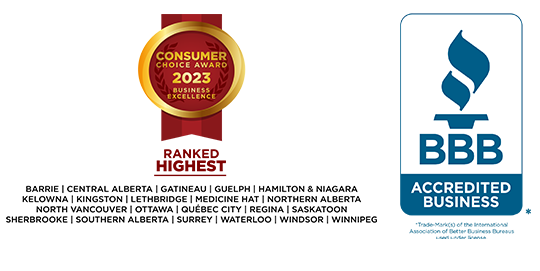New to Bankruptcy? Here’s a step-by-step guide of what to expect
You likely know what Bankruptcy is and what it can do for people suffering with unmanageable debt. But you may not understand how it works or what’s required of you. Maybe you feel intimidated by the legal jargon, concerns about losing everything you own, or the long-term impacts on your credit.

But don’t let these stop you from considering Bankruptcy as a viable, effective option to get the financial fresh start you need and deserve. Following is an end to end overview of a typical Bankruptcy proceeding. As you’ll see, it’s a lot less confusing (and intimidating) than it seems.
Step 1: Free Confidential Consultation
Every Canadian is entitled to a cost, hassle, and commitment-free assessment of their financial situation with a Licensed Insolvency Trustee. During this one-hour meeting, you will review your income, debt, and expenses — as well as discuss your challenges and goals. The Licensed Insolvency Trustee will then use that information to determine which solutions may be most appropriate for you.
Some potential options a Licensed Insolvency Trustee may present you with during a Free Confidential Consultation include (but aren’t limited to):
- Budgeting assistance and advice
- Debt consolidation
- Credit counseling
- Consumer Proposal
- Bankruptcy
Step 2: Choose your debt solution
The Licensed Insolvency Trustee will offer an unbiased opinion on the solution they feel would be the least costly, provide the most immediate relief, and best position you for a lasting financial fresh start. However, you must decide which option makes the most sense for you.
If you decide to pursue (and qualify for) Bankruptcy the Licensed Insolvency Trustee will help you begin the process.
Step 3: Disclosure and documentation
You and the Licensed Insolvency Trustee will both have to complete some paperwork to get your Bankruptcy filed with the court and underway. On your end, this includes:
- Providing all your current personal information (name, address, phone number, marital status, household size, etc.) and any information creditors may use to contact you (previous addresses, aliases, etc.)
- Providing a complete list of your outstanding debts and amounts to the best of your knowledge (including personal debts and those which may not show up in a credit report)
- Providing a complete list of your assets to the best of your knowledge
- Disclose your income and the income of other members in your household
The Licensed Insolvency Trustee will then verify your statements are accurate, determine whether you have any asset exemptions, calculate how your assets will be divided among your creditors, and compile this information into a court application.
Step 4: File your Bankruptcy
Once everything is prepared, verified, and signed, the Licensed Insolvency Trustee will submit your application to Court. Your Bankruptcy becomes official the moment the Court confirms receipt of your application.
Step 5: Stay of proceedings
A Bankruptcy provides immediate protection against collections action or court judgements on any of the debts included* in your proceeding. If you were previously receiving collections calls or subject to wage garnishments these would stop instantly. And, provided you continue to fulfill your Bankruptcy duties, these cannot start or resume for the whole time you are bankrupt.
*Note: A stay of proceedings does not apply to debts which you could not include in your Bankruptcy. Learn more about what you can’t include here.
Step 6: Fulfill your Bankruptcy duties
Most of your time and effort as a Bankrupt individual will involve completing your statutory duties. These are the legally binding steps you must take to financially rehabilitate yourself, demonstrate your progress to the court, satisfy your creditors’ rights, and prepare for your financial fresh start.
Follow these steps diligently. Failing to complete any of these duties could lead to the Licensed Insolvency Trustee or a creditor contesting your discharge — and, in a worst-case scenario, not being relieved of your debts.
Surrender non-exempt assets
You must deliver any property not covered under your province’s asset exemption rules, or which you have not paid to keep, to the Licensed Insolvency Trustee. Depending on your situation this could include anything from jewelry and valuable heirlooms to vehicles and real estate properties.
Learn more about asset exemptions here.
Surrender credit cards
You must provide the Licensed Insolvency Trustee any credit cards in your possession, and joint cardholders in your household must do the same. These accounts, along with any other existing debts will be permanently closed in your Bankruptcy.
Complete monthly income and expense reports
You must provide the Licensed Insolvency Trustee with a comprehensive overview of any income you earn and expenses you incur through each month of your Bankruptcy. It is imperative these be completed honestly and to the best of your knowledge as the Trustee will use this information to calculate any surplus income payments — and failing to provide them on time can affect your eventual discharge.
Make any required payments (including surplus income payments)
The two payments you’re likely to encounter in a Bankruptcy include (1) surplus income payments, and (2) administration payments to the Licensed Insolvency Trustee.
Surplus income payments may be required if your average monthly earnings exceed a federally prescribed threshold by more than $200 at the outset or by the end of your Bankruptcy. You must make any required surplus income payments before you are eligible for your discharge from Bankruptcy.
Learn more about surplus income payments here.
Administration payments are required from all bankrupt individuals. This is a federally regulated amount to compensate the Licensed Insolvency Trustee for their time in managing your Bankruptcy proceeding. This usually costs a minimum of $1,800 for a first time Bankruptcy and can be broken into monthly installments if necessary.
Attend financial counselling sessions
You must attend two financial counselling sessions with the Licensed Insolvency Trustee or a registered insolvency counsellor throughout your Bankruptcy. These sessions will help you understand the challenges and behaviours that may have led to your insolvency and arm you with strategies to avoid similar outcomes in the future.
You will learn how to create a household budget, credit management best practices, early warning signs your debt may be becoming unsustainable, and more.
Learn more about financial counseling sessions here.
Provide relevant income tax information
The Licensed Insolvency Trustee will complete two tax returns on your behalf. The first return will be for the year-to-date period leading up to your Bankruptcy. The second return will be for the year(s) you are bankrupt. You must provide the Licensed Insolvency Trustee with all relevant forms (T4, tax receipts, etc.) they require to complete these returns for you.
Step 7: Receive your discharge from Bankruptcy
Once you have fulfilled all your Bankruptcy duties and the appropriate time has passed — generally nine months for a first-time Bankruptcy, 24 months for a second-time Bankruptcy — the Licensed Insolvency Trustee will apply for your discharge. If you qualify for an automatic discharge (i.e. you have fulfilled all your duties and no creditors contest your application), you will be immediately relieved of all the debts you owed.
There are several reasons you may not qualify for an automatic discharge. If your income increased throughout your Bankruptcy, you may be required to make surplus income payments for another nine to 21 months. Or, if a creditor contests your discharge, you may have to attend a Court case to determine your next steps.
Step 8: Begin rebuilding your credit
Once you are relieved of your debts, you can start making the most of your financial fresh start. While you can now begin applying for credit again, we typically advise starting slow.
A first Bankruptcy will remain on your credit report for six years following your discharge, while subsequent Bankruptcies may last for 14 years, so lenders may initially be hesitant to lend to you. Use this time to focus on more urgent priorities like getting comfortable with your post-Bankruptcy budget and building your emergency fund first.
After a year or two, you can start looking at options like secured credit cards which can help build your credit without risking falling back into the cycle of debt.

